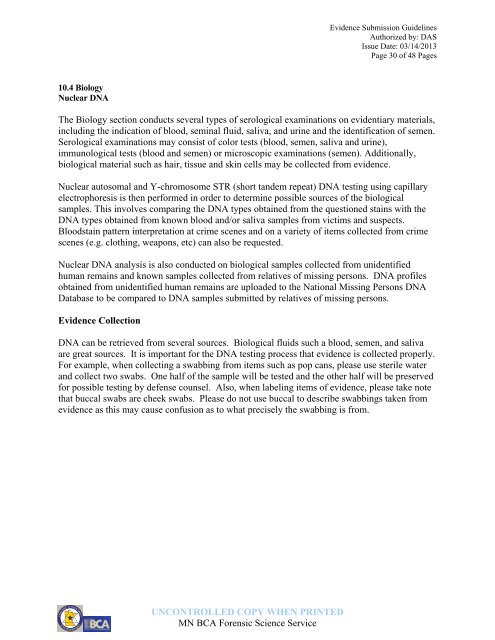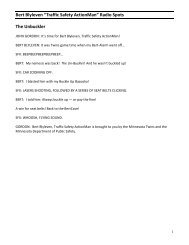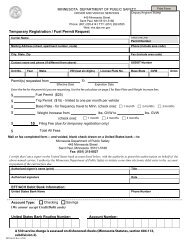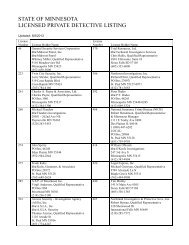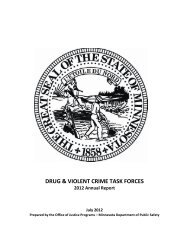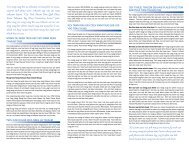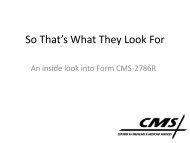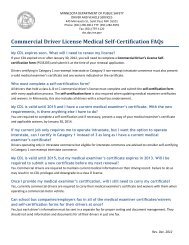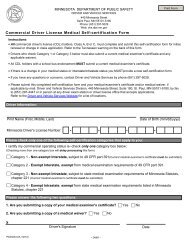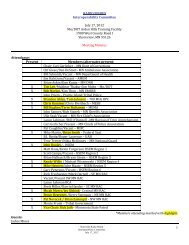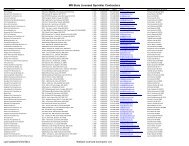Evidence Submission Guidelines - Minnesota Department of Public ...
Evidence Submission Guidelines - Minnesota Department of Public ...
Evidence Submission Guidelines - Minnesota Department of Public ...
Create successful ePaper yourself
Turn your PDF publications into a flip-book with our unique Google optimized e-Paper software.
10.4 Biology<br />
Nuclear DNA<br />
UNCONTROLLED COPY WHEN PRINTED<br />
MN BCA Forensic Science Service<br />
<strong>Evidence</strong> <strong>Submission</strong> <strong>Guidelines</strong><br />
Authorized by: DAS<br />
Issue Date: 03/14/2013<br />
Page 30 <strong>of</strong> 48 Pages<br />
The Biology section conducts several types <strong>of</strong> serological examinations on evidentiary materials,<br />
including the indication <strong>of</strong> blood, seminal fluid, saliva, and urine and the identification <strong>of</strong> semen.<br />
Serological examinations may consist <strong>of</strong> color tests (blood, semen, saliva and urine),<br />
immunological tests (blood and semen) or microscopic examinations (semen). Additionally,<br />
biological material such as hair, tissue and skin cells may be collected from evidence.<br />
Nuclear autosomal and Y-chromosome STR (short tandem repeat) DNA testing using capillary<br />
electrophoresis is then performed in order to determine possible sources <strong>of</strong> the biological<br />
samples. This involves comparing the DNA types obtained from the questioned stains with the<br />
DNA types obtained from known blood and/or saliva samples from victims and suspects.<br />
Bloodstain pattern interpretation at crime scenes and on a variety <strong>of</strong> items collected from crime<br />
scenes (e.g. clothing, weapons, etc) can also be requested.<br />
Nuclear DNA analysis is also conducted on biological samples collected from unidentified<br />
human remains and known samples collected from relatives <strong>of</strong> missing persons. DNA pr<strong>of</strong>iles<br />
obtained from unidentified human remains are uploaded to the National Missing Persons DNA<br />
Database to be compared to DNA samples submitted by relatives <strong>of</strong> missing persons.<br />
<strong>Evidence</strong> Collection<br />
DNA can be retrieved from several sources. Biological fluids such a blood, semen, and saliva<br />
are great sources. It is important for the DNA testing process that evidence is collected properly.<br />
For example, when collecting a swabbing from items such as pop cans, please use sterile water<br />
and collect two swabs. One half <strong>of</strong> the sample will be tested and the other half will be preserved<br />
for possible testing by defense counsel. Also, when labeling items <strong>of</strong> evidence, please take note<br />
that buccal swabs are cheek swabs. Please do not use buccal to describe swabbings taken from<br />
evidence as this may cause confusion as to what precisely the swabbing is from.


